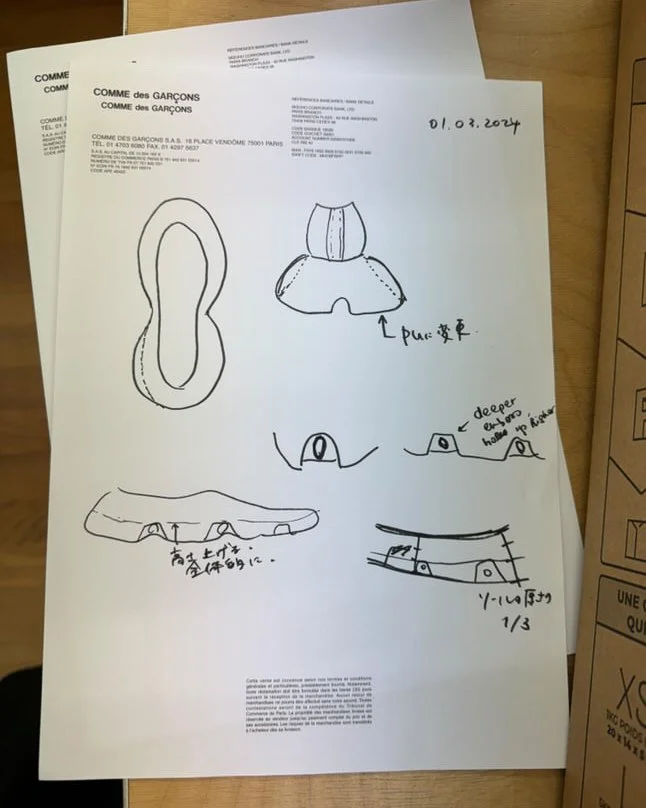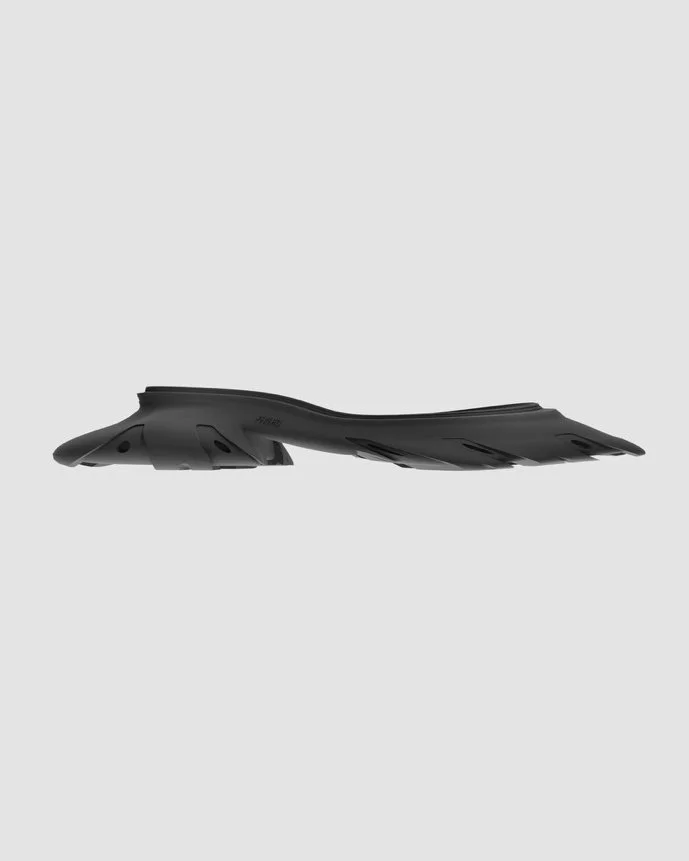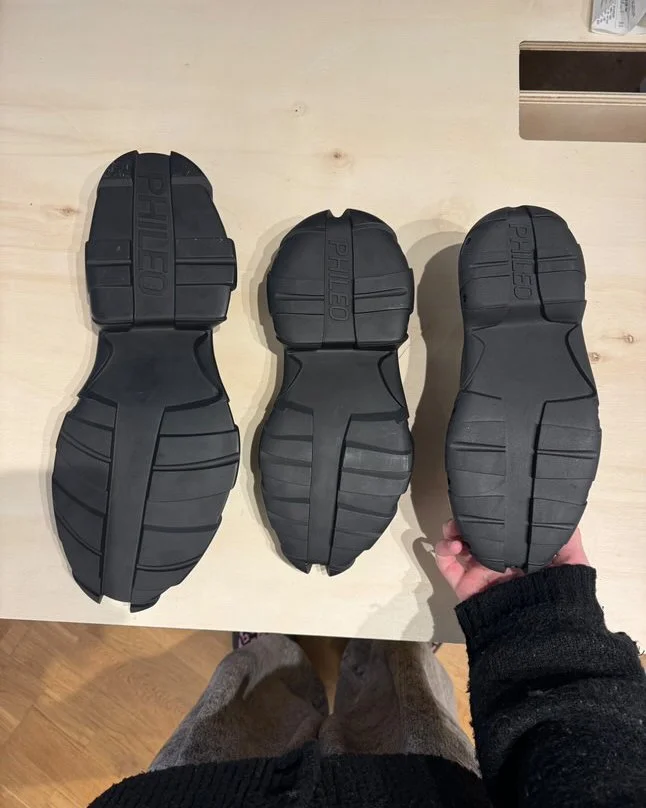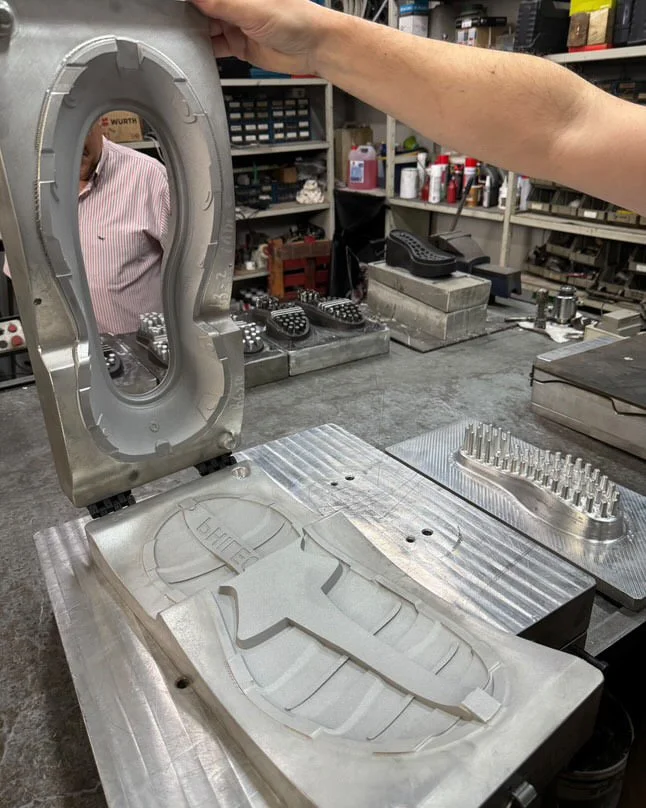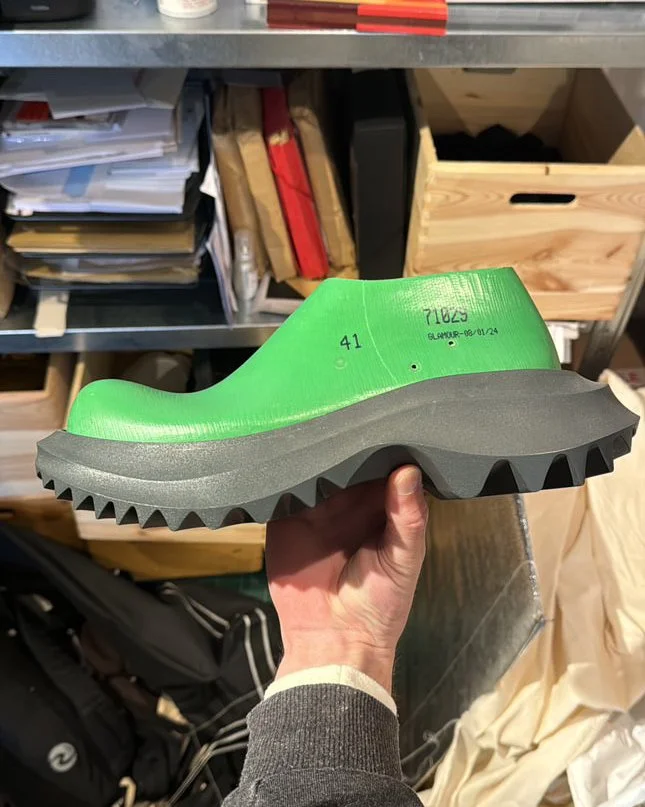Between The Lines 024: PHILEO
Embracing Limitations with Phileo Landowski
Words by Madison Kilough
With notable collaborations alongside Salomon and Comme des Garçons, and mentorship from Rei Kawakubo, we recently sat down with Phileo Landowski, the Paris-based designer behind his namesake brand PHILEO, to speak about the brand's development and working methodologies.…
Since its inception in 2019, PHILEO has served as an ongoing creative project and a “formal education” for Landowski. Drawing on his three years at Salomon, where he says he honed a balance between "technicality and purpose," the brand fuses sensibility with innovation. Even though the early stages presented challenges, he says, it has evolved into "a deep exploration of concept and technique." Known for its sculptural derbies and tonal palettes, PHILEO reinterprets traditional archetypes into modern silhouettes.
Rather than building collections based on a theme like many designers, Landowski explains that he likes to “apply big design ideas to smaller, structured forms like shoes” – often starting with many iterations of drawings before refining them. His approach prioritises “creativity over commerciality,” and focuses on three main concepts: retinal persistence, Sokubaku, and structural deformations. Retinal persistence, explained to him by Salomon’s XT-6 designer Benjamin Grenet, highlights the lasting impact of simple, efficient design over complex forms – drawing a contrast between fleeting and enduring visual impressions. This is seen in the sleek, machine-like forms and textured uppers of his footwear models.
His approach also draws heavily on Sokubaku, “the Japanese idea of constraint,” and Structural Deformations, where archetypes are reworked while maintaining their core function and appearance. Whether self-imposed or external, he views constraints as a way to go further creatively. Citing Le Corbusier’s view that architecture “must be the expression of our time and not a plagiarism of past cultures,” Landowski sees architecture's growing influence in his work but notes that “architecture is much less limited because at the end of the day, as a shoe designer, you have to make something you can walk in.” He points to other designers he has worked with, like Rei Kawakubo, who embrace limitations by creating garments using the entirety of “a single square piece of material.”
PHILEO’s partnership with Comme des Garçons and Rei Kawakubo began when Kawakubo visited his showroom at Dover Street Market. “I was quite nervous to see her close up,” he recalls, but “she walked over to my shoes and stayed for quite a long time.” When she asked for a line sheet, he instinctively handed her an iPad, but remembers Adrian Joffe, CEO of CDG, giving him a look as if to say, “what are you doing? She doesn’t ‘do’ iPads – you need to give her paper.” At that moment, Landowski thought he “had lost the biggest opportunity of [his] life.” However, after walking away, Kawakubo returned five minutes later, and he had managed to print a line sheet and hand it to her. The next day, CDG reached out and asked if he “could do exclusives and what the timelines, quantities, and everything would be,” marking the beginning of their ongoing collaboration. Now, through an exclusive deal with Dover Street Market, they hold the licence to his shoes while Landowski and his team focus on “production, development, and communication,” leaving the rest to DSM.
For the brand's most recent collaboration with Comme des Garçons, Landowski wanted to "do something crazy and huge" and proposed a “melted derby.” He recalled that when he presented the concept to Rei Kawakubo, "she said yes right away." The resulting model features a sleek black leather upper in a minimalist derby style, accented by an embossed logo on the side. Its most distinctive feature is its exaggerated, 100% rubber sole, resembling molten lava or futurist machinery. Set to release this fall, the architectural shoe offers a new perspective on old archetypes, reflecting the avant-garde ideology of Comme Des Garçons.
Additionally, PHILEO’s recent collaboration with Salomon also exemplifies the brand’s balance of technicality, purpose, and concept. The XT-SP1 shoe, described as “designed to express the candid, emotional purity of nature mixed into the backdrop of harsher, more rugged urban dwelling,” features “a soft and tactile knitted upper and a sturdy, reliable outsole.” It is an expansion of Salomon’s XT-4 model and includes its signature quicklace system, utilitarian hardware, and an agile chassis system, transfigured by PHILEO with tactile finishes, embedded terrain-like linework, and fuzzy materials.
Within the brand’s in-line collection, the 005-DERBY and 006-BALLERINE have become staples due to their versatility and ability to “be worn with almost anything.” These modernised archetypes, while aesthetically strong, are also rooted in a future-minded approach to sustainability. Landowski alternates between using Apple Skin® and traditional leathers to balance durability and eco-friendly production. The brand also emphasises open and traceable supply chains, the use of biodegradable and recyclable materials, and a focus on locally sourced components.
In our conversation with Landowski, it was evident that he views form and physicality as deeply intertwined with the brand's identity, emphasising that the “physical presence of a brand is the most important.” He is interested in “how volume and space can make you feel,” valuing these tangible elements more than the flat, 2-dimensional nature of e-commerce or paintings. His work with Comme des Garçons and Dover Street Market reinforces this perspective, where the focus on retail experience is paramount. For Landowski, these spaces offer a rich, experiential parallel to the online world.
Despite being a relatively young brand, PHILEO has already made a significant impact with its striking collaborations and innovative approach to design. The brand stands out for reinterpreting archetypal forms through fresh, forward-thinking concepts. His vision of the future, one that is “less referential to the past,” is evident in his exploration of new materials and technologies which he hopes will bring “freshness” to existing methods and aesthetics within the footwear industry. Looking ahead, we can continue to expect more exciting collaborations from Landowski, who recently unveiled a partnership with Adidas at Paris Fashion Week through an installation with artist Tadashi Kawamata at Dover Street Market.


